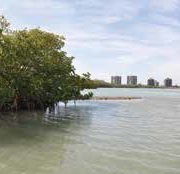For the love of water
Naples is a community such as no other. You hear people in jest, well sort of, tell their friends not to tell too many people about this great place. But, the enthusiasm can’t be contained and now it’s well known that Naples has been often called one of the best places to live. People make the choice to move to a new location based on criteria like, does it have a sound infrastructure? Does it have safe and friendly neighborhood communities?
Another question would be, does it attract like-minded people? Does it have a thriving arts community? If you like diving or fishing, golf, tennis, or simply like living close to the beach – if you like these and other recreational activities that you can enjoy where the sun shines nearly 300 days a year, then this is the place for you.
Another important criterion, is the choice to live near a college or university because that educational think-tank impacts and enhances community life. From Marco Island to Estero Bay the land is nearly surrounded by water. Here, the Gulf of Mexico meets the plentiful estuaries and mangroves, saltwater marshes, freshwater wetlands, rivers and canal systems that brim with birds, animal species, underwater life and rich vegetation.
As the economy swells during the winter and spring months an emphasis is put on infrastructure – on the roadways, waterways, communication towers, land use, and environmental management– that’s the quality of our air and water, agriculture, and natural vegetation. This is how the community harmonizes with its natural eco-habitats, implements its sustainability strategy and stimulates economic growth.
The economic impacts of tourism, the marine industry and the commercial fishing industry alone – rests in the billions of dollars. Florida Gulf Coast University is creating a preeminent center for marine and environmental science research and education in this Southwest Florida’s matchless ecosystem. Faculty and students of FGCU’s Coastal Watershed Institute, having the advantage of The Vester Marine and Ecological Field Station – located at the Collier and Lee county border at the south end of Estero Bay – is well-positioned for research with the Gulf of Mexico, coastal marine environments, the Florida Keys, gulf beaches, regional estuaries, and the Florida Everglades nearby awaiting study.
The habitat, coastline, water, climate, marine mammals, sea turtles, seabirds, fisheries, shellfish species, and plant life reveal infinite research, biotech, and health and human services opportunities that water shelters in plain sight, making this an advantageous place for the scientific community to further its understanding of nature’s most precious and crucial commodity, water.
Research is one thing but what, you do with your findings is what makes the impact. Research on the effects that natural and human borne processes have on the environment can provide valuable information on how coastal environments are affected, including how quickly natural habitats assimilate and recover.
Researchers at the Coastal Watershed Institute have identified three “hot topics” of research being pursued at the Vester Field Station, water quality, seagrass health and oyster reef restoration. These issues are especially timely as coastal ecosystems recover from Hurricane Irma impacts. The beautiful coastal environments of southwest Florida are magnets for not only local residents and tourists, but researchers and students who want to explore ways to protect these valuable resources now and in the future.
Students and visitors can come to learn and experience this unique region through Florida Gulf Coast University, The Conservancy of Southwest Florida and Rookery Bay National Estuarine Research Reserve.




Leave a Reply
Want to join the discussion?Feel free to contribute!